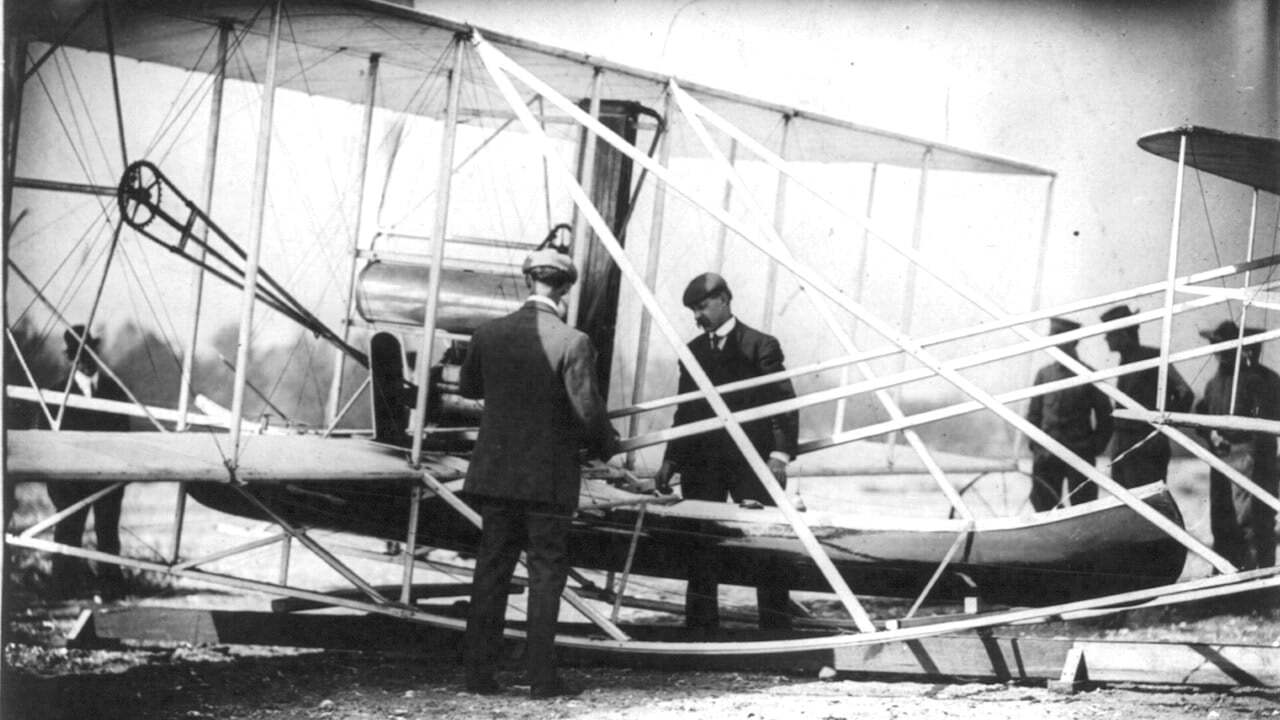
Did you know the Wright brothers' first flight on December 17, 1903, lasted only 12 seconds? That brief moment changed history forever. Orville and Wilbur Wright, two bicycle mechanics from Ohio, achieved what many thought impossible. Their aircraft, the Wright Flyer, covered just 120 feet on its maiden voyage. This groundbreaking event took place at Kitty Hawk, North Carolina. The brothers' success wasn't just luck; it was the result of years of meticulous planning, experimentation, and innovation. They faced numerous challenges, from designing a reliable engine to perfecting wing shapes. Their perseverance paid off, paving the way for modern aviation. Today, we take air travel for granted, but it all started with that short, windy flight over a century ago.
The Birth of Aviation
The first flight marked a monumental moment in human history. Let's explore some fascinating facts about this groundbreaking event.
-
The Wright Brothers: Orville and Wilbur Wright are credited with inventing and flying the first successful airplane. Their historic flight took place on December 17, 1903.
-
Kitty Hawk: The Wright brothers chose Kitty Hawk, North Carolina, for their flight due to its steady winds and soft sandy landing areas.
-
First Flight Duration: Orville Wright piloted the first flight, which lasted only 12 seconds and covered 120 feet.
-
Material Used: The Wright Flyer was constructed using spruce wood and muslin fabric, making it lightweight yet sturdy.
-
Engine Power: The aircraft was powered by a 12-horsepower engine, which the Wright brothers designed and built themselves.
Challenges Faced
Creating the first airplane wasn't easy. The Wright brothers encountered numerous obstacles along the way.
-
Wind Tunnel Testing: They built a wind tunnel to test different wing shapes and improve their designs, a pioneering move in aerodynamics.
-
Control Mechanism: The brothers invented a three-axis control system, allowing the pilot to steer the aircraft effectively.
-
Funding Issues: Financing their experiments was challenging. They used profits from their bicycle shop to fund their aviation endeavors.
-
Public Skepticism: Many people doubted the feasibility of human flight, making it hard for the Wright brothers to gain support.
-
Weather Conditions: Unpredictable weather at Kitty Hawk often delayed their test flights, adding to their frustrations.
The Impact of the First Flight
The success of the Wright brothers' flight had far-reaching consequences, influencing various aspects of society and technology.
-
Military Interest: The U.S. military quickly saw the potential of airplanes for reconnaissance and combat, leading to the development of military aviation.
-
Commercial Aviation: The first flight paved the way for commercial air travel, revolutionizing how people and goods move around the world.
-
Aerospace Engineering: The principles established by the Wright brothers laid the groundwork for modern aerospace engineering.
-
Global Connectivity: Air travel has made the world more connected, enabling faster communication and cultural exchange.
-
Inspiration for Innovators: The Wright brothers' success inspired countless inventors and engineers to push the boundaries of technology.
Lesser-Known Facts
Beyond the well-known details, there are some lesser-known but equally intriguing facts about the first flight.
-
Photographic Evidence: A local man named John T. Daniels captured the iconic photograph of the first flight, despite having no prior experience with cameras.
-
First Passenger: Charles Furnas became the first airplane passenger in 1908 when he flew with Orville Wright.
-
Patent Wars: The Wright brothers were involved in numerous legal battles over patent rights, which hindered early aviation progress.
-
Smithsonian Controversy: The Wright Flyer was displayed at the Smithsonian Institution only after a long dispute over who made the first flight.
-
Preservation: The original Wright Flyer is now preserved and displayed at the National Air and Space Museum in Washington, D.C., serving as a testament to human ingenuity.
The Legacy of the Wright Brothers
The Wright brothers' first flight on December 17, 1903, changed the world forever. Their determination and innovative spirit paved the way for modern aviation. From that 12-second flight in Kitty Hawk, North Carolina, humanity leaped into the skies, opening up endless possibilities for travel, commerce, and exploration.
Their achievement wasn't just about building a machine that could fly. It was about pushing boundaries, challenging the status quo, and believing in the impossible. Today, every airplane, drone, and spacecraft owes a debt to Orville and Wilbur Wright.
Understanding the history of their first flight reminds us of the power of perseverance and creativity. It shows that with enough passion and hard work, even the wildest dreams can take flight. So next time you board a plane, take a moment to appreciate the incredible journey that started with two brothers and a dream.
Was this page helpful?
Our commitment to delivering trustworthy and engaging content is at the heart of what we do. Each fact on our site is contributed by real users like you, bringing a wealth of diverse insights and information. To ensure the highest standards of accuracy and reliability, our dedicated editors meticulously review each submission. This process guarantees that the facts we share are not only fascinating but also credible. Trust in our commitment to quality and authenticity as you explore and learn with us.


